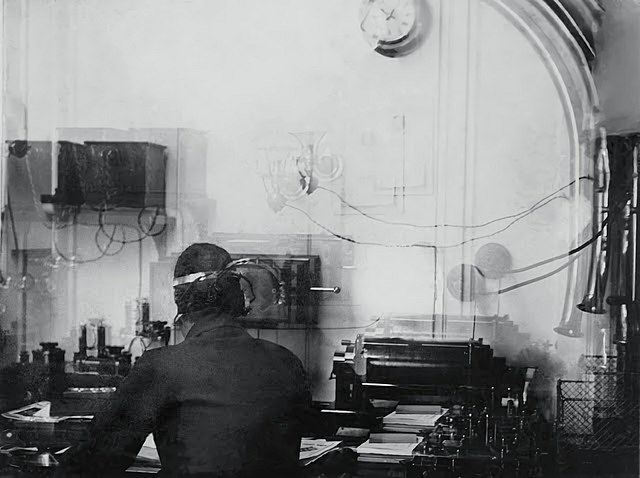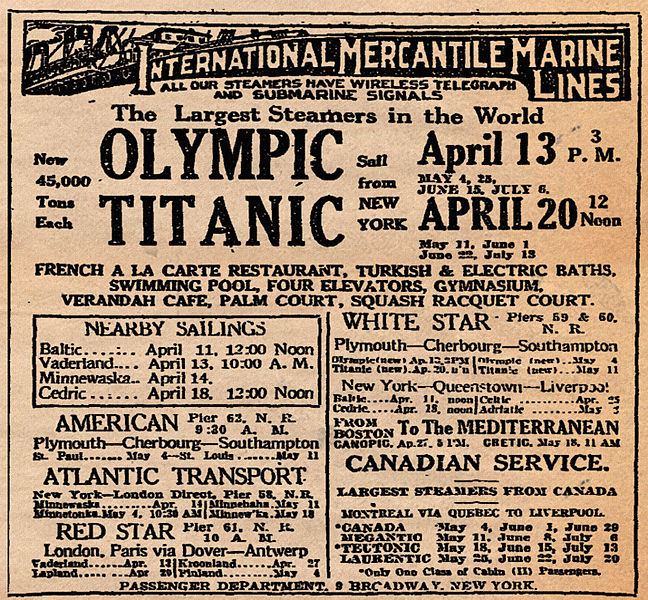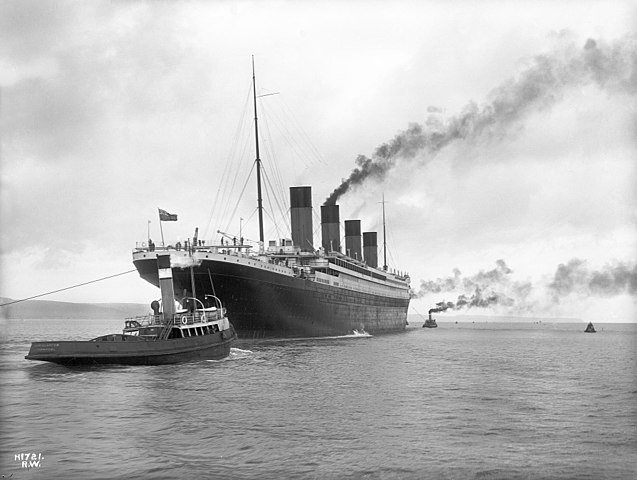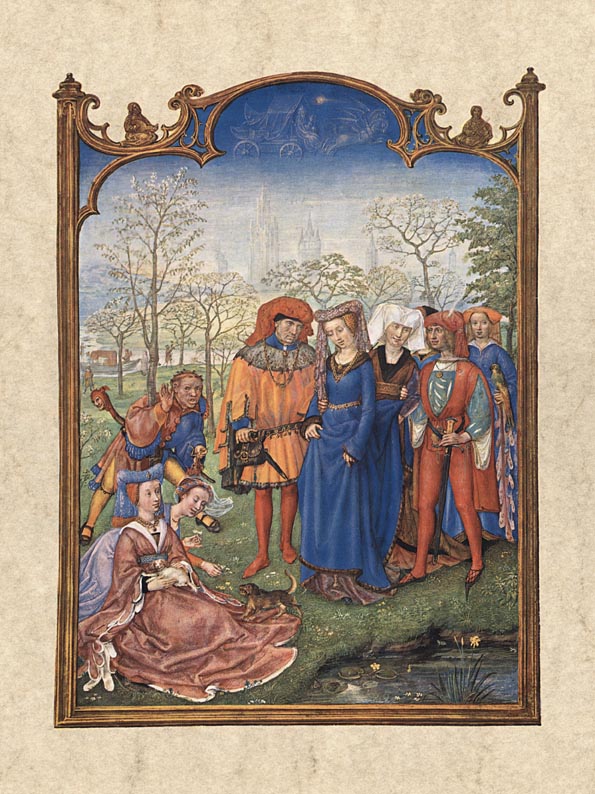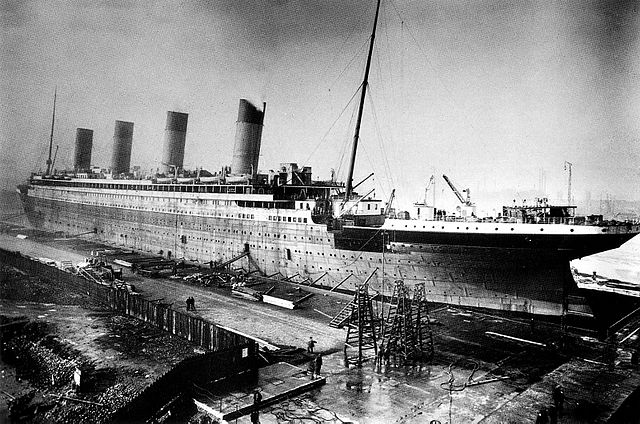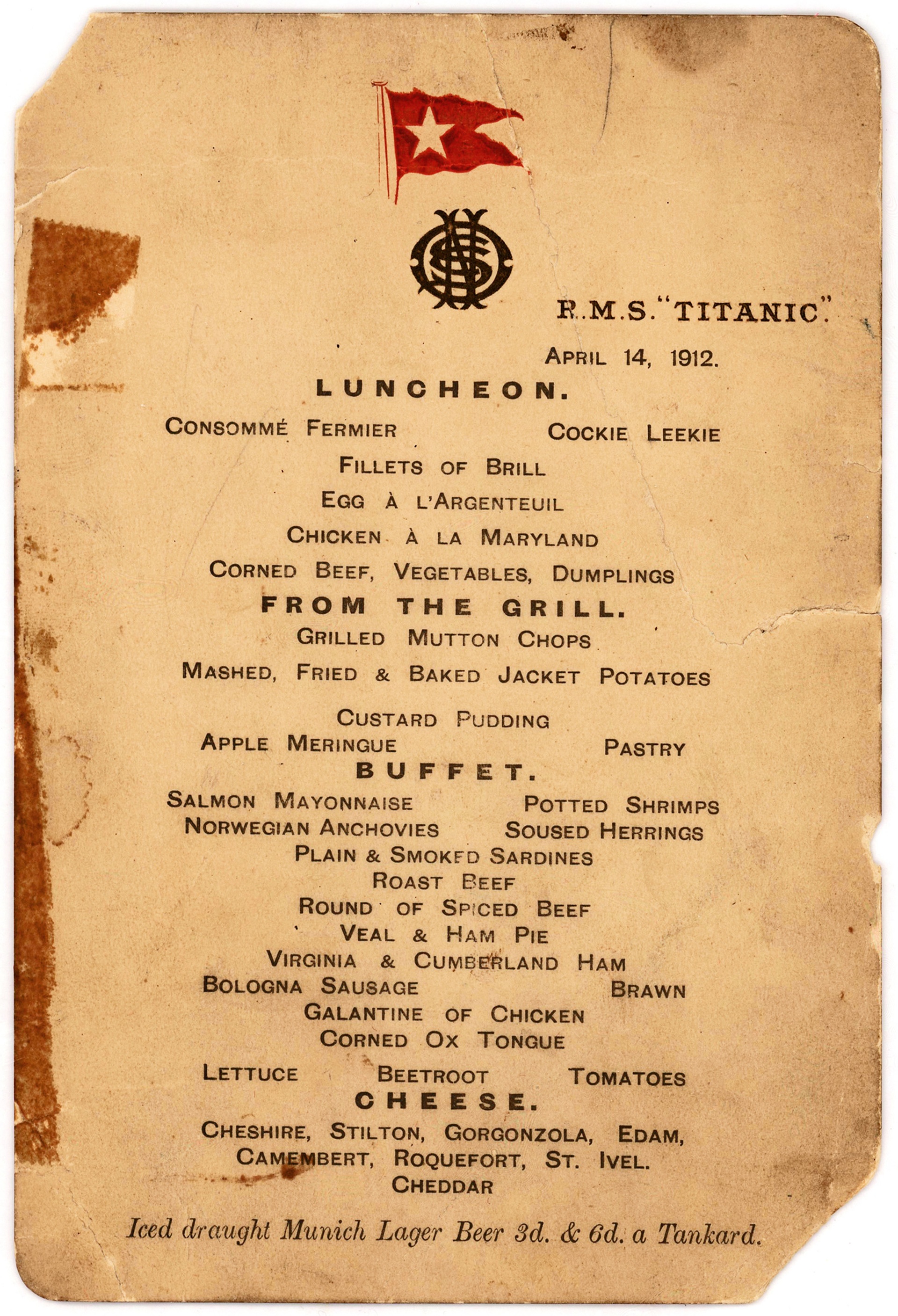
Photo: AP
Fresh food was loaded today on Titanic in preparation for its departure. Feeding passengers and crew was no small thing back then. At maximum capacity, it would carry 2,453 passengers and around 900 crew. That meant having large quantities of just about everything- meats, dairy, vegetables, fruits, flour, bread, and cereals. Since the ship served alcohol, it also carried ale, wine, and liquor as well. And, of course, a gentleman back then would have a cigar with his brandy, so they had cigars as well. Drinking water had to be stored as well for the voyage along with crockery, glassware, and cutlery for food to be prepared, served and eaten on. You can view a list of food at Titanic Facts.
Sources:
Books
Behe, George TITANIC: SAFETY, SPEED AND SACRIFICE, Transportation Trails, Polo, IL 1997
Eaton John P. & Haas Charles, TITANIC TRIUMPH AND TRAGEDY, SECOND EDITION, W.W. Norton & Company, New York, New York, 1995 First American Edition
Lord, Walter, A NIGHT TO REMEMBER, Holt Rinehart and Winston, New York, New York, 1955. Multiple revisions and reprints, notably Illustrated editions (1976,1977,1978 etc)
Lord, Walter, THE NIGHT LIVES ON, Willian Morrow and Company, New York, New York, 1986 (First Edition)
Lynch, Don & Marshall Ken, TITANIC AN ILLUSTRATED HISTORY, Madison Press Books, Toronto, Ontario Canada, 1992
Internet

